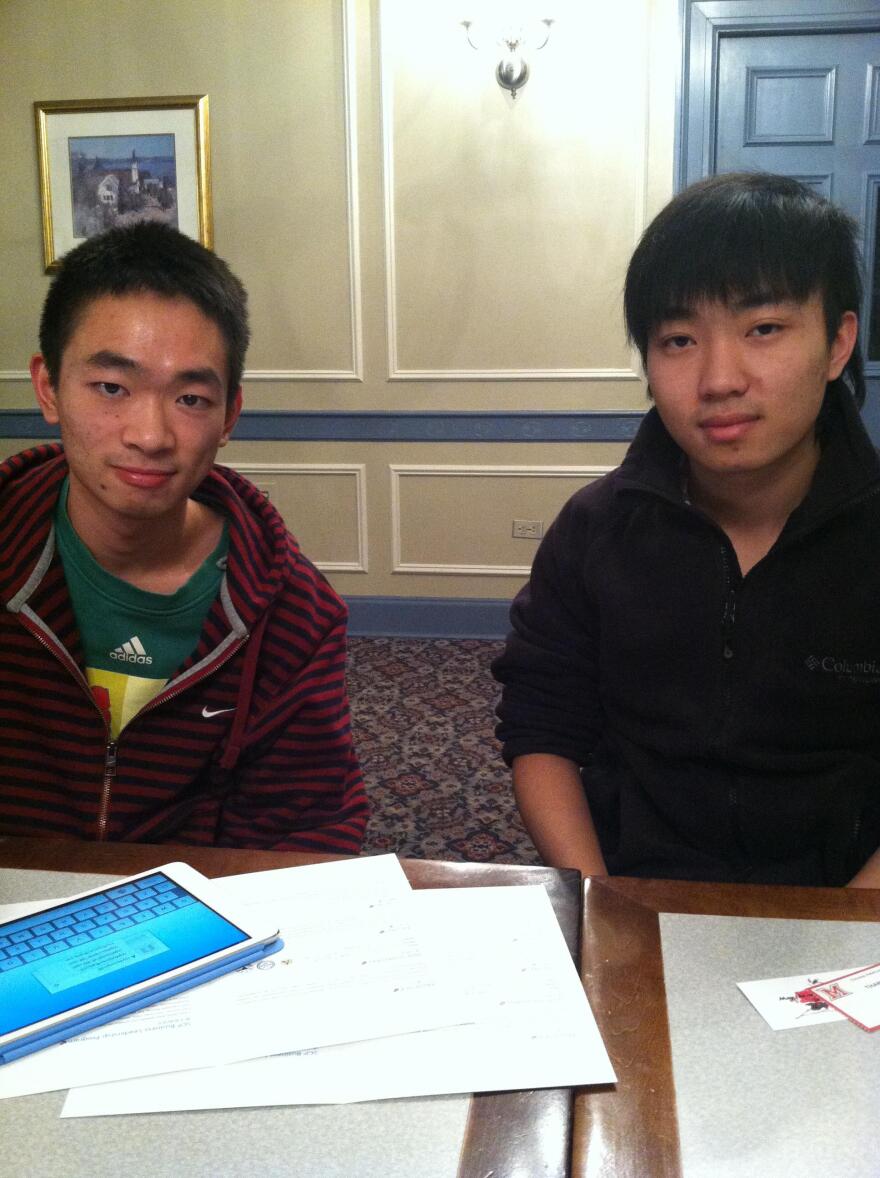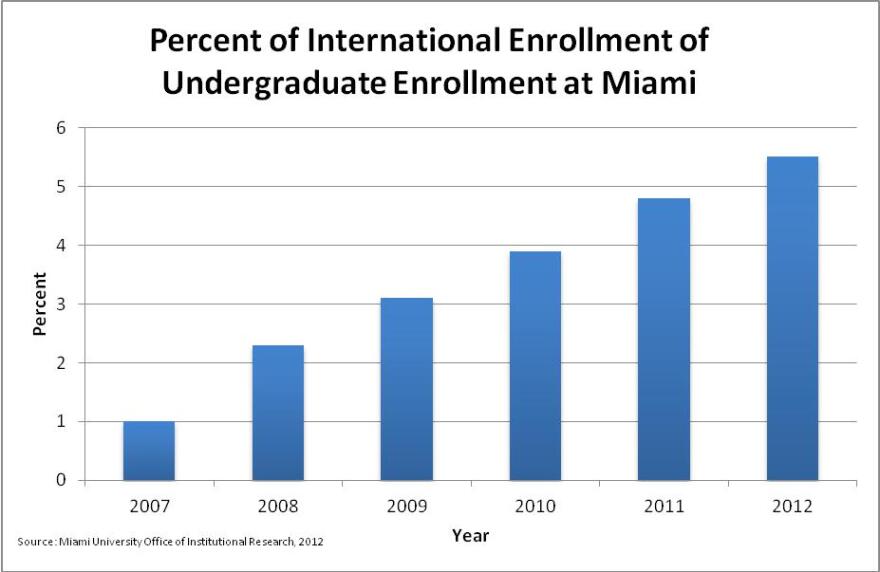Spicy eggplant, braised pork, sesame pastry balls and the fried coconut pancake are four of the largest dishes at Uncle Yip’s Chinese restaurant in Sharonville, Cincinnati.
Despite this, all four dishes ended up on the plate of Miami University sophomore Xi Chen, a slim Chinese student and one of 566 Chinese students enrolled at Miami in the fall 2012 semester.
“I just want to order everything on the menu” Chen said. “I know I can’t finish all of this, but it will be good leftovers because I cannot get this in Oxford. I have tried every Chinese restaurant uptown, but I get tired of them quickly because they are not the same [as the food in Beijing].”
Traveling 35 miles for familiar food is just one adjustment for the increasing number of Chinese students who find themselves at Miami’s picturesque campus in semi-rural Ohio. Making friends and settling into the college culture is also a challenge for students from halfway around the world. Miami, like other schools, is expanding recruitment of students from abroad.
Over the last two years, the number of Chinese applicants to Miami increased 43 percent, according to university officials. Chinese students make up 68 percent of international undergraduate enrollment at Miami, contributing to the increase in the percentage of minority students. Meanwhile, the percentage of white students has decreased nearly 8 percent since 2007, according to the Miami Office of Institutional Research.
The Chinese come here because of high quality, excellence and education. They don’t care about Ohio. They actually don’t know Ohio exists,” director of the Office of International Education David Keitges said. “They come here because of the rankings and the quality of the school they’re coming to.”

While some Chinese students said they applied on the basis of Miami’s performance on published rankings, and the business school in particular, some said the school’s isolated location was also a draw.
The environment is very good for study,” sophomore finance major Jia’nan Zhang said. “If you’re in a big city you would be excited all the time like with shopping or some other activity.”
Like Zhang, Chen, the student from Beijing who travels 35 miles for Chinese food, said she always dreamed of living in the countryside. Before coming to Miami, Chen enrolled in Shandong University for one year, located in the capital city in Shandong Province.
“[I] wanted to find a place that’s extremely different,” Chen said. “[I wanted] a change in environment, so Oxford was an ideal choice.”
She was excited to come to Oxford and signed up for Miami’s Academic Preparation and Culture Program one month before the start of classes. However, Chen’s “honeymoon” with Miami was short-lived, as she soon began missing two things about Beijing: the food and her friends.
“I actually want to make friends with natives, but it’s really hard,” Chen said.
According to Keitges this is a significant problem.
“Americans are friendly, but hard to make friends with,” Keitges said.
Chen said nearly all of her friends are international students.
“There is a huge cultural difference, and I don’t know how to start a conversation with natives,” Chen said.
Associate Professor of Communication Ronald Becker has also observed this cultural barrier.
“Dealing with international students you need to come out of your comfort zone in all kinds of ways,” Becker said. “A lot of Miami students are afraid of doing uncomfortable things. How do you begin conversation with a stranger? What are you suppose to talk about? [Domestic] students need to understand the value that they can get out of the experience of talking to a non-native English speaker.”
In Becker’s mass media class, international students are challenged, but somewhat aware of references to American culture. But, according to Becker, American students are oblivious to the finer points of Chinese culture.
Xing agreed it is hard to make domestic friends.
“We have very different growing up experiences so I have no topics to talk about with American students,” Xing said. “Basically we’re all friends, just not friends that hang out together.”

This year, 5.5 percent of Miami’s 15,073 undergraduate students are international. The number of international students at Miami has increased more than 480 percent since 2007, part of a broader university effort to increase international enrollment, according to Keitges.
“This boom in international students is a new thing [at Miami] and the perspective these students bring is beneficial,” Miami Student Body President John Stefanski said. “I am not sure how significant the change [in student population] will be in the future.”
Nationally, undergraduate international student enrollment increased 5.7 percent in the 2010-2011 academic year, year over year, according to a report from the non-profit Institute for International Education. Chinese students comprised nearly 22 percent of more than 700,000 international students in the United States in the same year, growing by more than 23 percent year over year.
International recruitment is increasingly important for universities throughout the United States, according to Keitges. International students not only contribute different cultural perspectives but also boost the economy, adding over $21 billion to the US economy through tuition and other expenses in 2011, according to the US Department of Commerce.
Keitges said international students bring millions in revenue to Butler County each year, including both tuition and off-campus expenses.
“[International students pay] the same rate primarily as our out-of-state domestic students on paper, but the amount that they get from various sources to help pay that are usually less,” Aaron Bixler, associate director of International Recruitment & Support Services in Miami University’s Office of Admission said.
Bringing international and specifically Chinese students to the United States has been a long process, according to Keitges.
“China has been in an economic development phase for about 35 years now and it took about 25 years to build up enough societal wealth so families would have enough money various ways to send kids to study here,” Keitges said.
Keitges said Miami’s goal in three years is for 10 percent of the incoming freshman class to be international students. According to Bixler, Miami is now focusing its efforts in countries other than China in order to bring more diversity to the university.
“I feel like 99 percent of international students are from China at Miami,” Chen said. “It’s not what I expected, although I know Chinese students are everywhere.”

